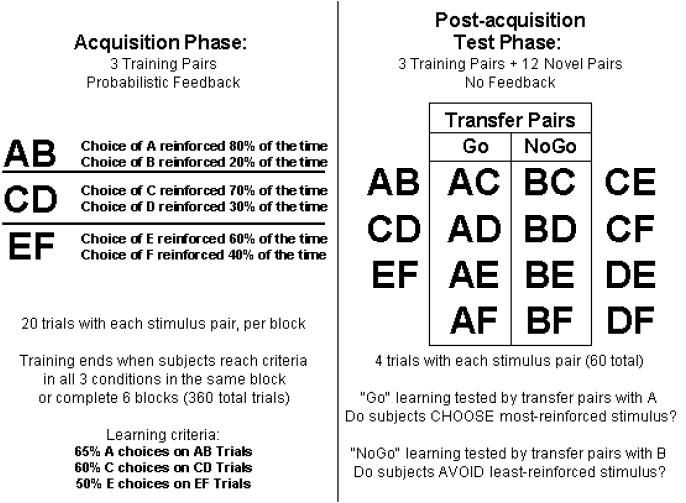Fig. 1.
The Probabilistic Stimulus Selection (PSS) Task. The task consists of two phases: During an “acquisition phase”, subjects are presented with three training pairs, and instructed to identify which stimulus from each pair is more frequently reinforced. In AB trials, for example, a choice of stimulus A leads to positive feedback in 80% of trials, whereas a B choice is reinforced on the remaining 20%. Learning the most-frequently rewarded stimulus in each pair can be accomplished either by learning that one of the stimuli leads to positive feedback, or that the other leads to negative feedback (or both). Subjects are told to choose that stimulus as often as possible. Once subjects reach criterion on all three training pairs, or complete 360 total trials, they proceed to a “post-acquisition test phase,” during which they are presented with four trials each of the three training pairs, along with 12 new pairs created from all unused combinations of the training stimuli. The eight new stimulus pairs involving A and B are called the “transfer pairs” and used to gauge “Go” and “NoGo” learning. If positive feedback was more effective, they should reliably choose stimulus A in all novel test pairs in which it is present; if they learned more from negative feedback, they should avoid stimulus B.

